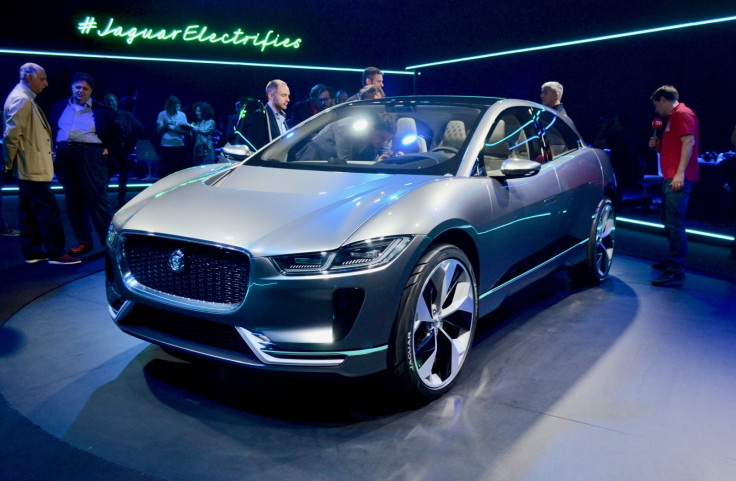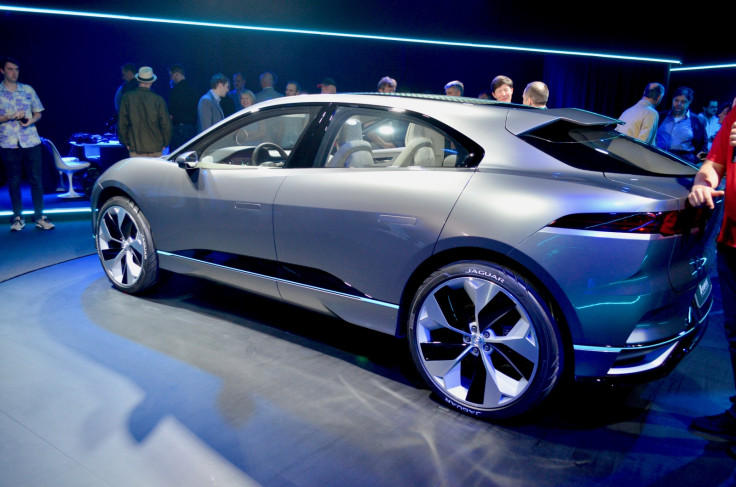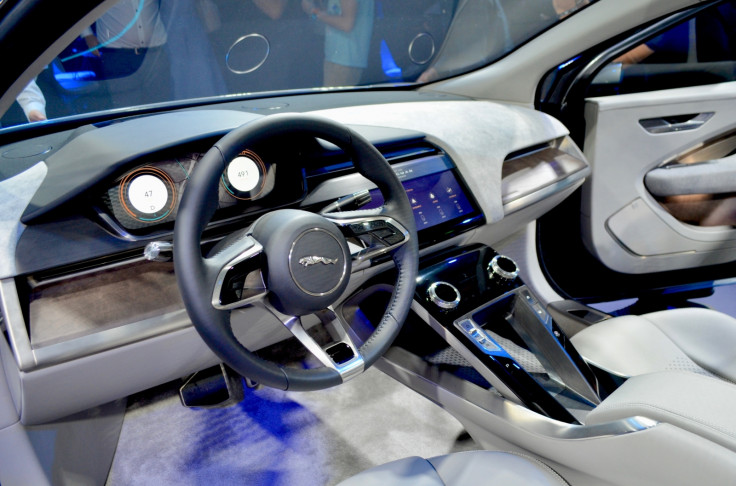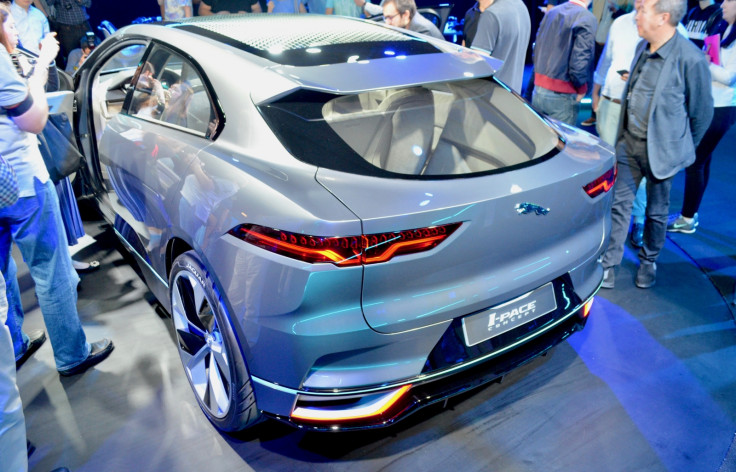Jaguar I-Pace Concept hands-on: First look at Jag's electric SUV
We look at the brand new Jaguar I-Pace Concept ahead of its debut at the Los Angeles motor show.

Do not let the 'Concept' bit of this car's name fool you. Where manufacturers often use the word to describe a far-out prototype with cameras instead of wing mirrors, doors which open vertically, and wheels the size of trampolines, Jaguar is being more restrained.
The I-Pace Concept you see here will morph into a production version in late 2017, before going on sale in the second half of 2018. It still features some of the concept car hallmarks; a minimalist interior and the tread pattern of those tyres, for example. But the rest of the car looks ready to go.
To be shown off at the Los Angeles motor show later this week, IBTimes UK has been hands-on with the I-Pace Concept to get a closer look at Jaguar's first-ever electric car.
The I-Pace has real presence about it and exudes a sense of agility thanks to its "cab-forward" design.
What this means is, because the electric motors and drivetrain are much smaller than an internal combustion engine, the nose can be smaller and the cabin moved forward. As a result the I-Pace appears more dynamic and sporty than other SUVs of this size.

And by installing the battery in the floor (just as Tesla does), Jaguar has created an interior the same size as cars from the class above. The lack of drivetrain means the I-Pace has a completely flat interior floor.
The front end, although short for an SUV (because there's no engine), features a modern but familiar take on the traditional Jaguar nose. The grilles, vents and lights retain the same house style as the F-Pace and Jaguar's current saloon cars, while the rear lights are similar to the F-Type's and even those from the E-Type of the Sixties. In fact, Jaguar design chief Ian Callum reckons the I-Pace is the most important car for the company since the E-Type.

Pull one of the motorised pop-out door handles and step inside to an interior flooded with light thanks to the large panoramic glass roof. The interior is both futuristic and familiar, blending a new set of five "slimline" seats and spartan dashboard with a centra; 12in touchscreen running Jag's current infotainment system. A second smaller touch screen sits between two control dials on a floating central console; a third display is installed behind the steering wheel.
There will undoubtedly be changes made in here before the I-Pace arrives in your local dealership in 2018, but the Concept feels honest and as if it isn't trying to appear like it's from a different planet.
The rear of the car is where we suspect the I-Pace Concept will attract the most controversy. A roof mounted wing sits above a sharply raked windscreen, which then tapers to the horizontal boot top and heads almost immediately vertical to the bumper and diffuser. The classic Jaguar hips also join the horizontal plane of the squared back, making for some awkward intersections. It feels as if the I-Pace was happy to be a sports car, until suddenly remembering after the rear wheels that it needs to be an SUV too, and becomes abruptly chunky.

It's a brave design which certainly stands out, but is one we think might take some getting used to - and will perhaps see the most change between now and the production version. Speaking of which, that will arrive a year from now and go on sale in the second half of 2018.
For now, the I-Pace Concept is exactly what Jaguar needs it to be: a car which is striking and new, but while retaining the company's house style and looking refreshingly un-like a concept.
It is interesting that Jaguar used a virtual reality experience to reveal the I-Pace to journalists, because from what we have seen and heard so far, the first electric Jag already feels close to reality.
© Copyright IBTimes 2025. All rights reserved.





















